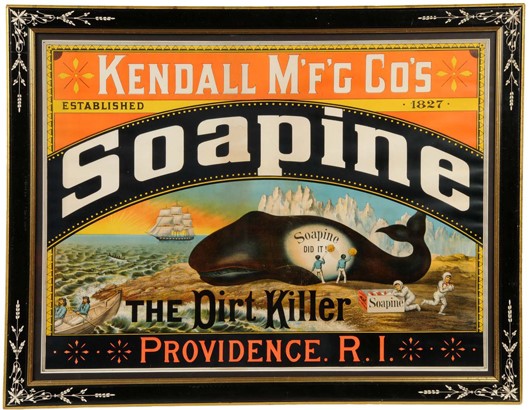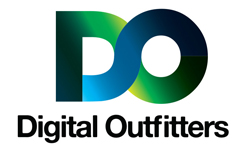Branding Your Business

The history of branding for small businesses goes way back, all the way to painted signs in the late 1880’s – creating a differentiator between small businesses who wanted to ‘stand out’, and to display how you want your business to make people think or feel about your business. There is a deep psychological connection to brands, and it is not by accident. Some of the greatest brands have used academic studies, information gathering, and extensive surveying to come up with a brand that works for their company. By processing all this information before you launch your brand, your chances of success can be boosted before you even open your doors on the first day.
For small businesses, it’s important to have a good picture of the perfect customer – and to keep driving your brand towards pleasing that customer. If you want to grow your business, try to build out your brand identity using your logo, brand message, business cards, vehicle graphics, uniform, and other promotional ‘swag’. These items help imprint the image of your business into the minds of potential customers – allowing your company to jump forward at the moment when a customer needs your services or product. If your door squeaks – you think of WD-40. If you have a small cut, you think of Band-Aid. If you are thirsty, you think of… well, it could be Pepsi or it might be Coke. Both soda makers are spending millions of dollars every year to compete against one another, and both understand the value of their brand in the global marketplace.
Another featured the competition between Nike & Adidas in the basketball shoe industry, where they both slipped a bit – didn’t establish their stranglehold, and along comes Under Armour – which, only several years in – has become a well-known brand, with an extremely high recognition rate. Under Armour could reach the highest peaks, to ‘come play with the big dogs’ – but it was not by luck alone. They saw an opportunity, and leaped. That opportunity, was that the basketball shoe industry was heading into a very brash, flashy, nearly obnoxious territory with shoe designs, and Under Armour wanted to create shoes that were more conservative. The professional brand was inclined to believe that they could release very plain, sharp designs – without focusing on being too bold with colors, patterns, and textures for the materials. This choice paid off, as the consumer market was more willing to buy shoes that could be worn without gathering too much attention, but still had all the new design and comfortable features as the designs released by Nike & Adidas. Again, Under Armour saw an advantage, studied the data – and made that leap to leverage the data against the bigger companies.
The lesson to be learned here, is that sometimes more established companies are too busy trying to continue their current rate of profits to stop and think about where they are losing money. Your job, is to capitalize on them losing money and turn it into your brand advantage. Find a company like Starbucks – who has a global brand, unbelievable market share – and think about how they could be doing things better. How is their brand struggling? Is there a thing that Starbucks does that could be different – but it seems like they “don’t care” because of their size? I can name one right off the top of my head. Starbucks is a retail COFFEE establishment, but they sell frothier, iced, frappe, latte, etc., drinks than when they first started the business. I’m a bit of a coffee-nut, so when I say that their black coffee tastes bad – I’m not saying it to offend Starbucks, as their focus is on ways to continue their current rate of profits. That is their BRAND. Inventing new drinks that are based loosely around coffee to turn a profit. When a new drink hits Starbucks, it goes viral on the internet – with people writing blog posts, snapping selfies with the drink – and conversation happening about the drink at workplaces across the country. These are key elements to a very successful brand. So – back to the leveraging point… If you were to start a small coffee shop right next to Starbucks, with better coffee (better beans, better processing, better brew altogether) – I’m not saying that you’d take down Starbucks, but you’d be able to make a sizable profit. Think of Peet’s Coffee – which has risen over the last couple years. They do sell a couple specialty drinks, but their focus is on creating the best cup of coffee you can buy. They source their own beans, they brew it in the store – and take their time to ensure you have a great cup… every time. Their brand is focused right alongside Starbucks – and many times you’ll see that the Peet’s is gathering more of the business professionals who don’t want to wait in line with teenagers trying to buy the Unicorn Frappe. It will be very interesting to see how this whole situation turns out – as Starbucks originally grew their brand out of the business heavy streets of Seattle, creating the ‘best cup of coffee in the Pacific Northwest” – but has turned their focus, while Peet’s is sneaking up to leverage themselves into the place where Starbucks was around 10 years ago.
As you can see – brand strategy isn’t just about your logo or letterhead, there is a lot of background noise that you must contend with, and quite a bit of data/information that you need to gather to help yourself create a brand for your company.
The individual methods of ‘branding’ your business is broken down here – but by no means is this a complete list. For more information on new methods to promote your brand identity, follow me online using one of the social networking links on this website – or contact me using the information on the “Contact” page. Thank you for reading, and stay tuned for more posts in the near future!

Leave a Reply